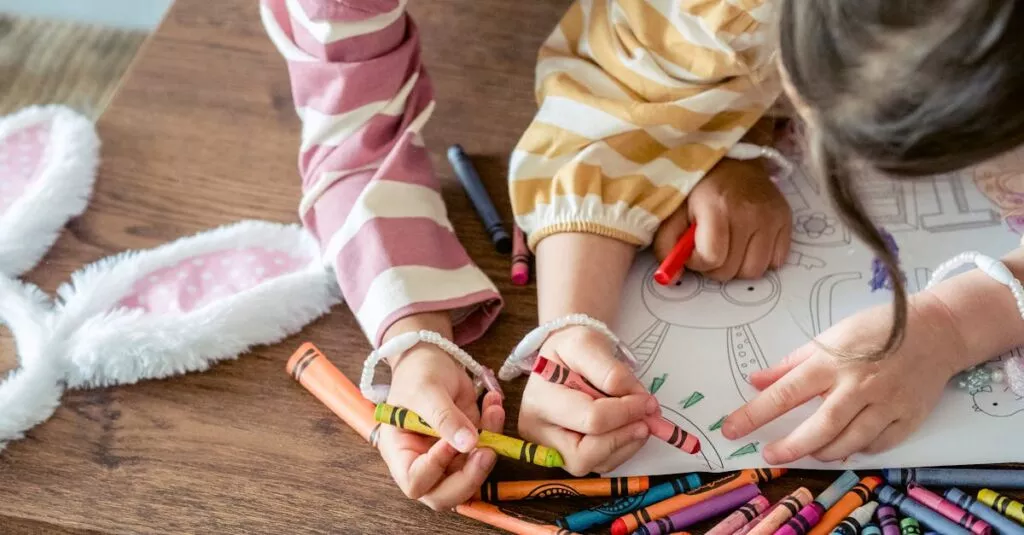Breaking it Down: The Story of Easter
Explaining the significance of Jesus’ resurrection and eternal life to pre-schoolers might seem as daunting as explaining quantum physics. Yet, with a sprinkle of creativity and a dash of patience, it can turn into an enriching experience. Start by simplifying the story; think of Jesus as a superhero who came back to life, showcasing his love and power. Emphasize the aspects of love, hope, and happiness. Encourage them to ask questions, and be ready with answers that soothe and inspire their little minds.

It is crucial to adapt the storytelling to their level of understanding, making it engaging and memorable. Craft the narrative in a way that resonates with them, focusing on the positive messages of love, kindness, and the enduring spirit of Easter.
Crafts & Activities: Learning Through Play
Dive into crafts and activities that bring the story to life. Create a simple ‘Empty Tomb’ craft using a paper cup and a rock to roll away, or plant a seed to watch it grow, symbolizing new life. Each activity is not just fun but a tactile representation of Jesus’ resurrection and the concept of eternal life. Laugh, play, and learn together; these moments are golden opportunities to discuss these profound themes in a lighthearted manner.

Engage in hands-on activities and crafts to make learning about the importance of Jesus’ resurrection meaningful and memorable. Let creativity and imagination pave the way for deeper understanding.
Storytime: Jesus’ Love and Sacrifice
There’s nothing quite like storytime to capture a child’s imagination. Select children’s books that illustrate the Easter story with colorful pictures and straightforward narratives. Use stuffed animals to act out parts of the story or adapt it into a bedtime story, emphasizing Jesus’ love for everyone and his incredible journey back to life. It’s a gentle and effective way to introduce them to the concepts of sacrifice, love, and eternity.

Engage children with interactive storytelling to bring the message of Jesus’ love and sacrifice to life in a meaningful way.
Outdoor Adventures: Experiencing Eternal Life
Engage with nature to learn about eternal life. A simple walk in the park or garden, observing the renewal of life in spring, can serve as an excellent analogy. Relate the budding flowers and new leaves to Jesus’ resurrection and the promise of eternal life. Use this time to talk about the beauty of nature, life cycles, and how they reflect the Easter story. It’s a peaceful way to connect the dots between nature and spirituality.

Take the time to appreciate the beauty of creation and find spiritual meaning in the wonders of the natural world. Reflect on how nature can inspire and teach valuable lessons about faith, renewal, and the promise of eternal life.
Questions & Answers: Nurturing Curiosity
Be prepared for an avalanche of questions. Why did Jesus have to die? What is eternal life? Use analogies suitable for their age, like comparing eternal life to their favorite never-ending story or a never-ending box of crayons.
Offer reassurance that it’s okay to have questions and doubts, and guide them through these complex topics with patience and love.

Celebration: Bringing the Story to Life
Create a mini-celebration to remember Jesus’ resurrection. Organize a small Easter play at home, bake resurrection cookies, or have a garden tea party. Use these activities to reinforce the story’s themes of hope, renewal, and joy. Closing your teaching with a celebration makes the learning experience memorable and offers a joyful conclusion to the Jesus’ resurrection story.

